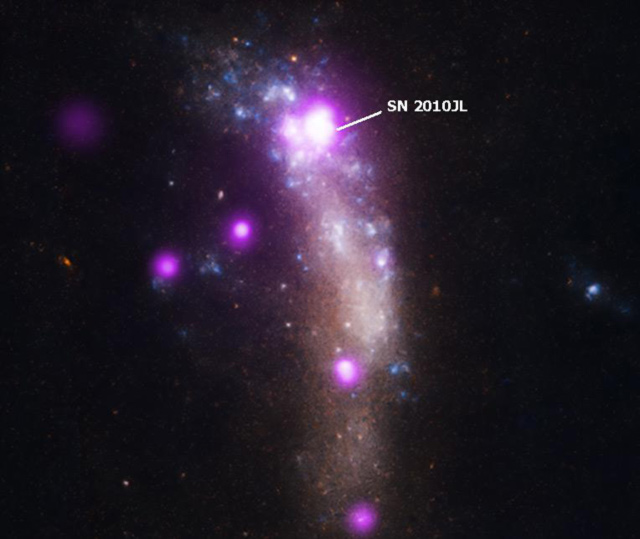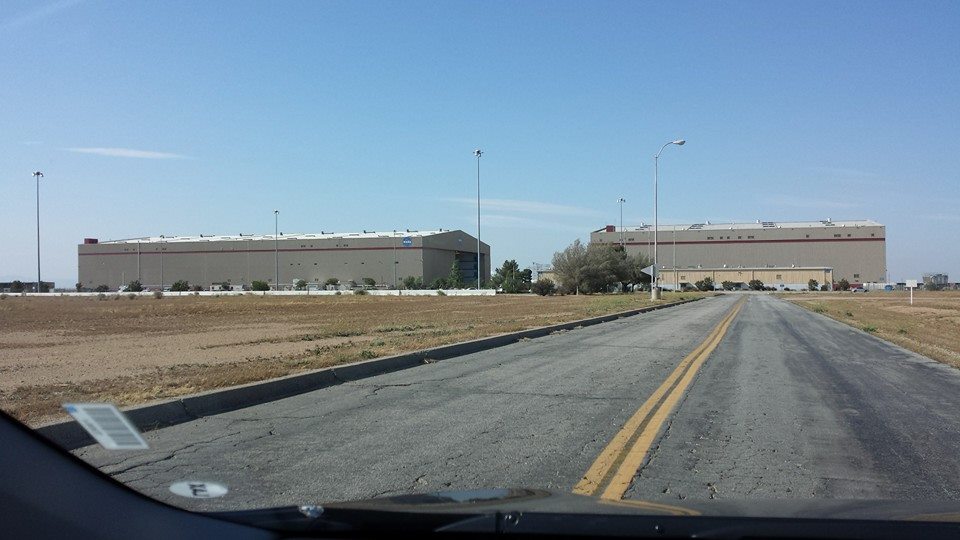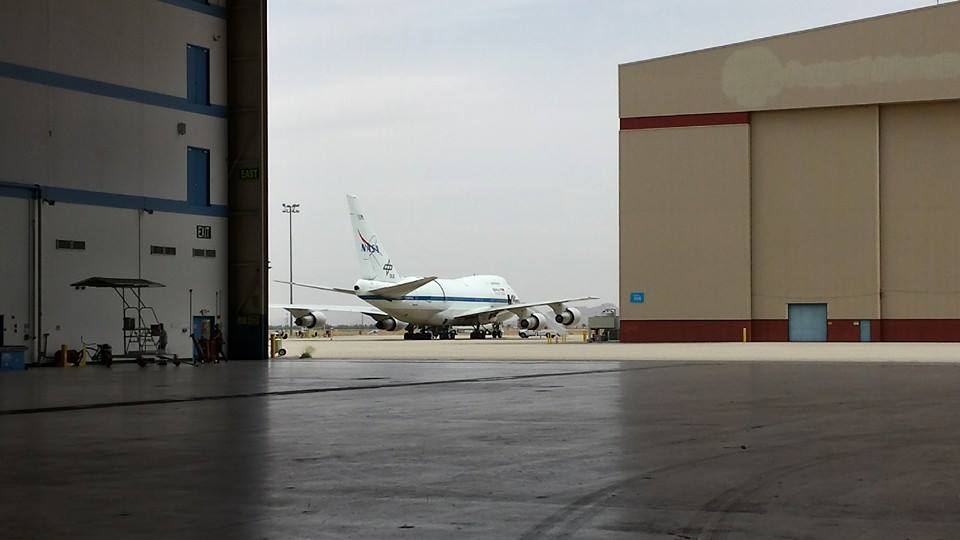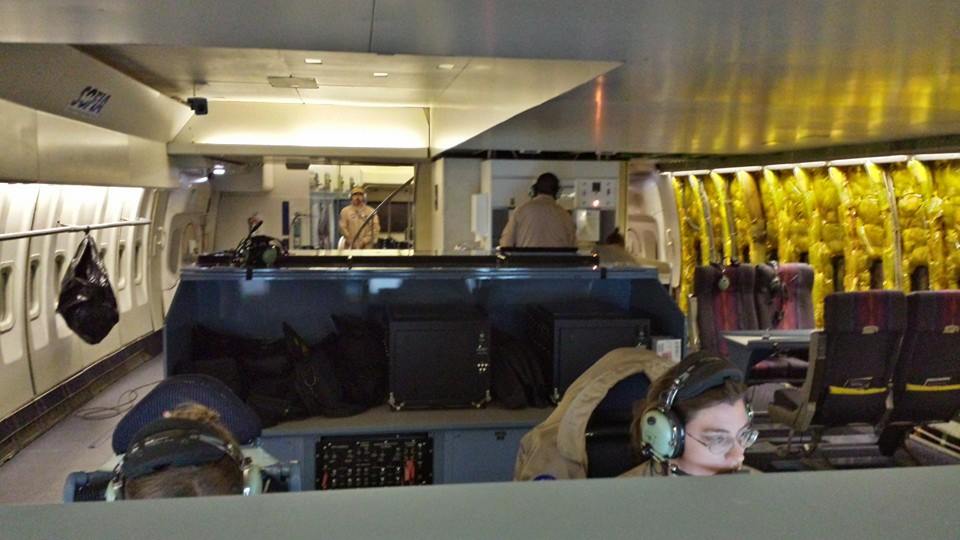A Ride on SOFIA
- By Maggie Masetti
- September 5, 2014
- Comments Off on A Ride on SOFIA
This is a guest blog by astronomer Brian Williams, who last blogged for us about the building blocks of life.
A joint project between NASA and the German space agency (DLR), the Stratospheric Observatory for Infrared Astronomy, or SOFIA, is a bit of a departure from NASA’s traditional telescope fleet. Rather than flying in space, SOFIA features a 2.5-meter telescope implanted into the side of a modified Boeing 747SP. The telescope observes the cosmos in infrared wavelengths beyond what our eyes can see, and doing so requires getting above the water vapor in the atmosphere close to the Earth’s surface that absorbs infrared radiation. SOFIA accomplishes this by flying at around 40,000 feet, revealing a part of the spectrum that is inaccessible from the ground.
In May, I had observations being done on SOFIA to observe a bright supernova that exploded a few years ago. The supernova, given the catalog number 2010jl, had been observed with Spitzer last year, where it was noted to be bright in the infrared, several years post-explosion. This is quite rare, and we were granted follow-up observations with SOFIA to observe at even longer wavelengths. By observing at various places in the spectrum, we can put better constraints on the source of the bright emission and determine what is special about this supernova that makes its surroundings glow brightly several years after exploding. As part of this, I got the chance to go on the observing flight on the night of May 5-6th. Here’s the story of the experience.

This composite image of UGC 5189A shows X-ray data from Chandra in purple and optical data from Hubble Space Telescope in red, green and blue. SN 2010jl is the very bright X-ray source near the top of the galaxy (X-ray image: NASA / CXC / Royal Military College of Canada / P. Chandra et al; Optical image: NASA / STScI)
SOFIA flies out of NASA’s Armstrong Flight Research Center in Palmdale, CA, about an hour north of Los Angeles. I arrived at Armstrong’s Hangar 703 early in the afternoon of the 5th. I had electronically requested temporary security access through my NASA badge to save myself paperwork at the gate. Crossing my fingers that everything had been filled out correctly, I held my badge up to the security scanner. The light changed from red to green, and I heard an electronic locking mechanism open. I was good to go. I met up with my contact person inside and met some of the other people who would be onboard the night’s flight: a group of half a dozen middle and high school teachers from across the country, chosen as part of SOFIA’s Airborne Astronomy Ambassadors Program.
Up first at 3:00 was an airplane safety briefing required for anyone who had not flown on SOFIA before. I couldn’t help but wonder if this was really necessary. I fly roughly 50,000 miles a year… I think I know how to find the exits on a plane. That said, this hour long briefing was surprisingly useful and interesting. I learned that there’s a correct and incorrect way to use the sliderafts (hint: jump onto the slide, don’t sit) and don the life preservers. I held some of the equipment that you hear about in the pre-flight videos that we all ignore on commercial flights. I put on a portable oxygen mask (SOFIA is not laid out like a normal plane, having most of the seats removed for equipment, so the typical oxygen masks that fall from the overhead compartment are not on the aircraft). I even learned how to use the emergency escape ropes from a hatch on top of the cockpit, which apparently are real things. They took us on a walk-through of the aircraft, pointing out where various important things are. Flashlights, fire extinguishers, life preservers, the like. They took us into the cockpit. They let me sit in the pilot’s seat. This wasn’t part of the safety briefing. I believe the safety officer said that no one had ever asked him that before, but he said it was fine, and it just goes to show what you can get if you ask for it.
After a break for food, we met for the pre-flight mission briefing. This involved everyone who would be on the flight that night, as well as a few support staff on the ground. The flight personnel that night consisted of two pilots and a flight engineer upstairs in the cockpit, a lead and assistant mission director, two instrument scientists, two telescope operators, three German scientists from DLR who were monitoring the telescope operation for an upcoming servicing, a safety officer, the six teachers, and me. I’ve almost certainly forgotten someone, but that’s approximately correct. We went over the flight plan for the evening and got the latest updates on the weather and atmospheric conditions and the status of the instruments onboard. Everything looked great. As the only “guest scientist” on the flight, they asked me to say a few words about what we’d be observing that night. When it was over we headed out to the plane for the flight to begin. Wheels up at 7:05 pm PDT.
The flight lasted about ten hours, landing at 4:58 on the morning of May 6th. While SOFIA’s telescope has some flexibility in where it can point, it is still largely tied to a direction that is approximately perpendicular to the direction the plane is flying. Thus, what looks like a nonsensical route for a plane to fly is actually a carefully choreographed dance designed to place all the night’s targets within view. We started off flying northeast until we were over Colorado, then turned northwest to fly all the way up to British Columbia. We then backtracked to Montana, flew over North Dakota, then headed back northwest again to Alberta. Finally, we had a long, straight shot back to southern California for a landing. The flight itself drags on a bit over the course of the night after the initial excitement wears off. There are no in-flight movies or meals. There’s only so much you can chat with people after that many hours. They did allow us go up to the cockpit and hang out with the pilots, so that was neat. A few people napped. We weren’t awarded frequent flier miles, but it was still a great experience. Upon landing, the crew went home and the teachers went to their hotel. I took advantage of the crash-pad at Armstrong and slept for a few hours before driving back to LA to get on another plane and head home.
The data didn’t show a direct detection of supernova 2010jl, but all hope is not lost. We prepared for that possibility, and my colleagues and I are analyzing the data to see if useful upper limits can be extracted from the data. Much like the curious case of the dog that didn’t bark, sometimes not seeing a thing can tell you as much about it as if you had seen it, if you can figure out why it isn’t there. A negative signal may imply that the type of dust that is present around this supernova doesn’t emit much light at the longer wavelengths that SOFIA observes at. It may also mean that the overall brightness has faded over the course of a few months. Follow-up observations with other instruments and theoretical modeling of the emission that we see and don’t see will allow us to answer these questions.











